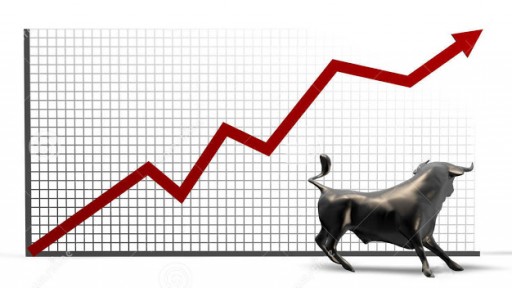- Home
- >
- Fundamental Analysis
- >
- This bull market still has a bit of steam in it

This bull market still has a bit of steam in it

The ability of stocks to move up on good news and easily discount bad news are the hallmarks of a sustainable bull market.
U.S. stocks had been in a holding pattern for three weeks due to an early Spring Break and the recently commenced earnings season. Monday, equities rallied—lead by energy (XLE), of all sectors—despite the failed Doha oil summit. After the bell, the smallest quadrant of the so-called FANG stocks, Netlfix (NFLX), got hammered because its growth projections didn't meet expectations. Tuesday was no better, with Intel announcing massive layoffs and lowering guidance
Yet, here we are, with the S&P 500 (^GSPC) pushing up against all-time highs. It’s do or die time for the bulls, but they retain the edge. If they can push through overhead supply that extends to 2135, it’s clear sailing to the promised land of hallucinated multiples.
2016 is an echo of 2015, the year this bull market began. In March, 2009, the Bernank announced $1.25 trillion in QE, which rocketed stocks off their lows (the actual low had been a few weeks prior). But almost no one thought it was sustainable. The stocks that were up the most were the ones that had been hammered the most—a true “junk off the bottom” rally.
The first scary correction was in June, 2009. Shorts piled in. Headlines were bad. Dow zero was a target. But in July, Meredith Whitney upgraded Goldman Sachs, calling it a “bull stock for a bear market.” The shorts were promptly crushed in a rally led by the financials.
Things are different now. The economy isn’t great, but it’s better. This time around, Goldman’s earnings are getting worse, not better. (By the way, this is the opposite of what’s supposed to happen when the Fed begins ratcheting up interest rates.)
The shorts are not putting up enough of a fight. If they can’t get traction in the wake of the current rout in tech earnings, it’s margin call time. Breadth and volume are not great, but they’ve both reversed their downtrends from 2015.
The bottom line is this seven year bull might be creaky, but it still has a bit of steam in it.
 Varchev Traders
Varchev Traders If you think, we can improve that section,
please comment. Your oppinion is imortant for us.






